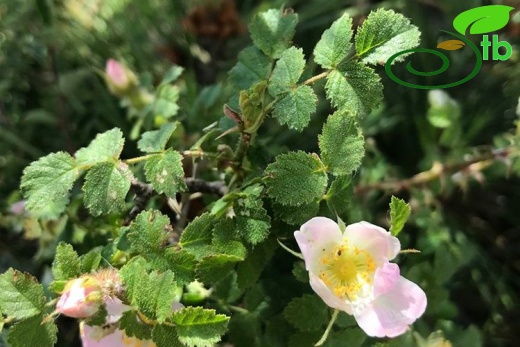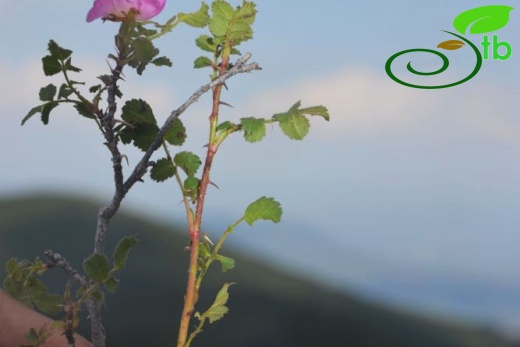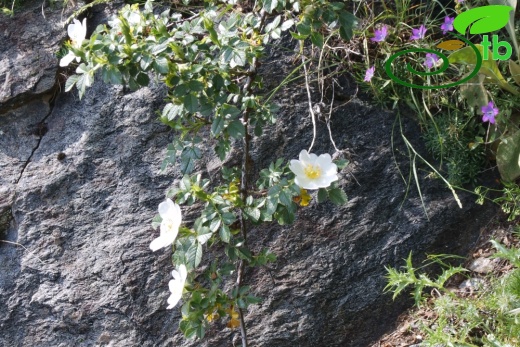Rosa pulverulenta
Rosa pulverulenta
Bodur gül
Syn: Rosa sicula
Low-growing shrub, 0,1-0,5 m, often forming dense patches or mats. Prickles weak to rather coarse, straight to curved, occasionally hooked, with a ± dilated, usually acentric base, usually passing into and dispersed with a dense covering of acicles, bristles and stalked glands. Leaves often small, ± sticky, aromatic; leaflets usually 5, ovate, elliptic or suborbicular, retuse or subacute, with a rounded to cuneate base, glabrous to ± pubescent, usually very glandular, at least beneath, glandular-biserrate, teeth short, 8-20 on each side; rachis ± pubescent, glandular and often prickly; stipules glandular, rather broad with diverging, ± triangular, short auricles. Flowers solitary or 2-4 together. Pedicels 0,2-1,5 cm, glabrous or pubescent, usually ± densely stalked-glandular, only rarely smooth. Sepals ovate with a rather short, often not much dilated apex, up to 2,5 cm long, outer sepals pinnatifid with lanceolate, glandular-biserrate lobes, ± glandular on back, patent to erect after anthesis, usually not deciduous before the fruit matures. Petals 1-1,8 cm long, pink. Styles villous to lanate, stigma-head ± compact, depressed-semiglobose; disc often very narrow, orifice wide. Hypanthia globose to ovoid, 1-2 cm long, smooth or ± glandular-hispid, scarlet. Fl. 6-7. Dry open, often grazed places, Juniperus scrub, Picea woodland, Artemisia steppe, stony and rocky slopes or banks, screes, subalpine meadows on limestone or igneous substrate, 700-2550 m.
S.E. Europe, W. Syria, Cyprus, Caucasus, Soviet Azerbaijan, Soviet Armenia, Iran, Afghanistan.













